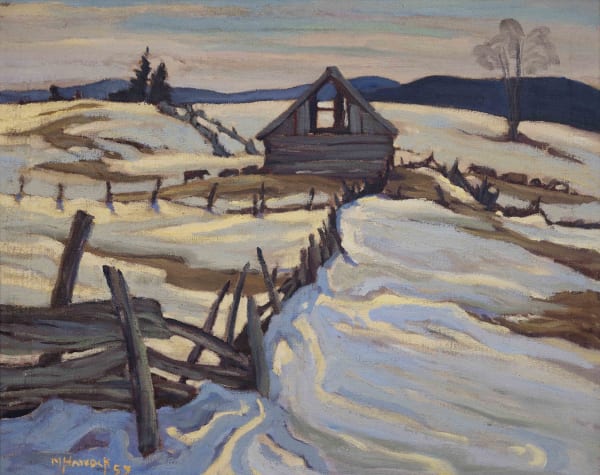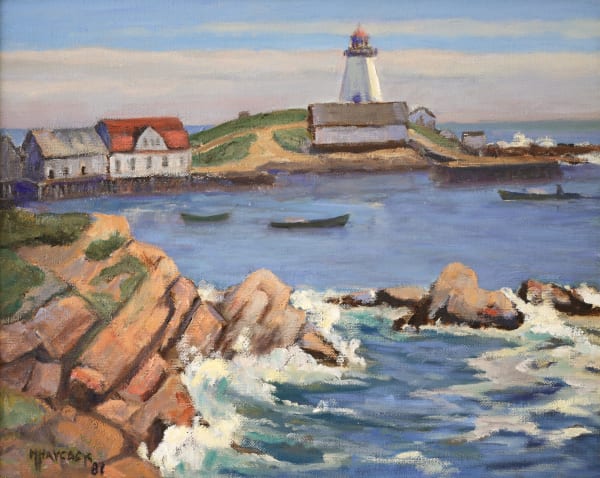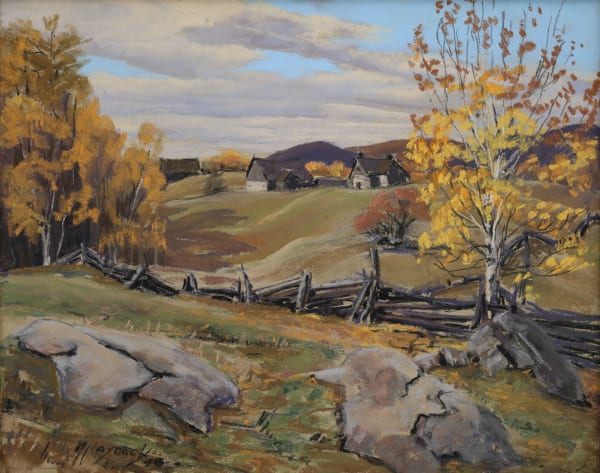Maurice Hall Haycock (September 1,1900 - December 23, 1988), a celebrated Canadian artist, left an indelible mark on the art world with his dedication to portraying the Canadian Arctic's rugged beauty. His journey from a research scientist to a revered artist highlights a passion-driven transformation, guided by his encounters and friendships within the art community.
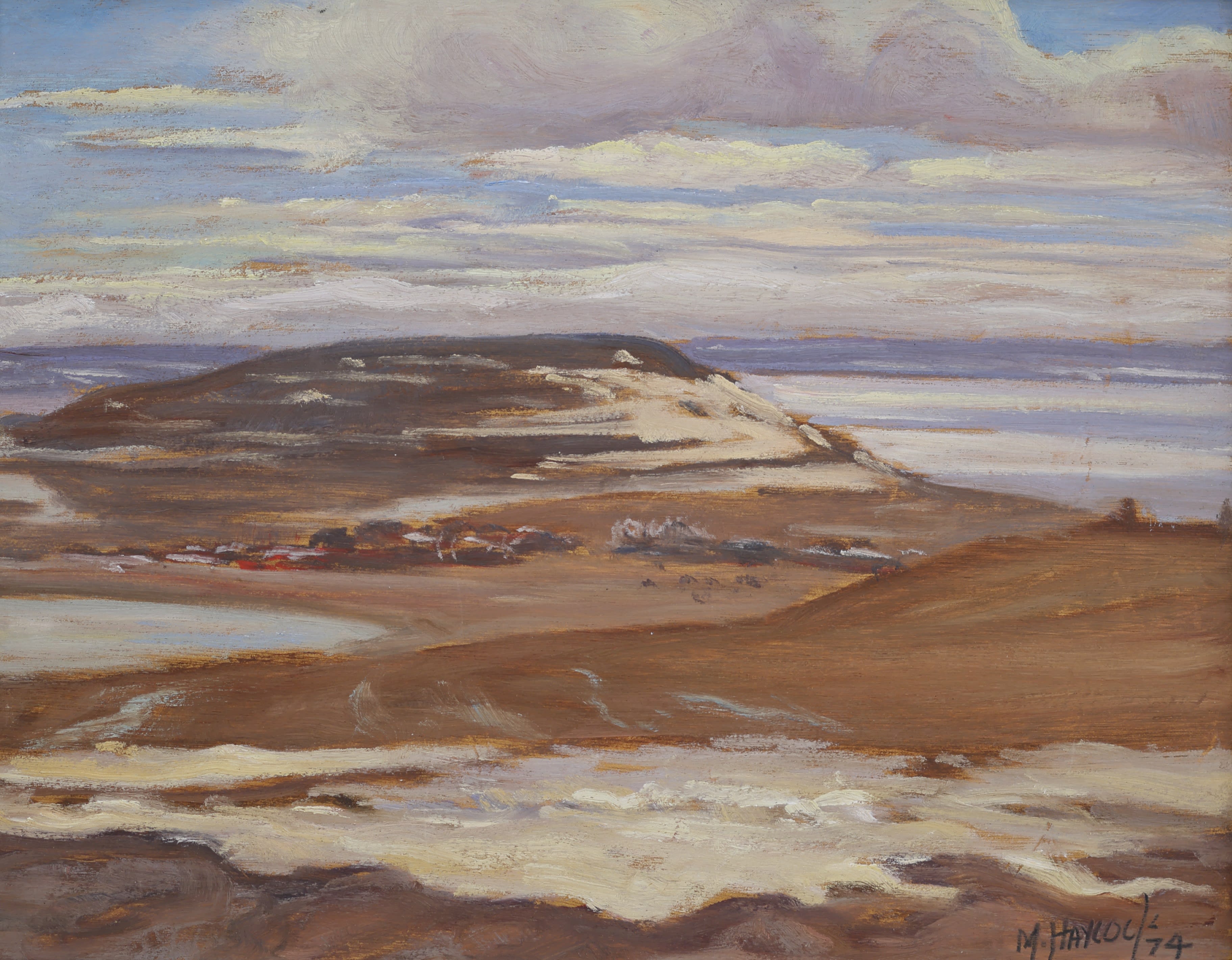 Maurice Haycock; Resolute Bay from Hill to North East
Maurice Haycock; Resolute Bay from Hill to North East
Early Life and Career Beginnings: After graduating from Acadia University in 1926 with a BSc and an MA in Geology, Maurice Haycock embarked on a surveying assignment in the Arctic in 1926 as the assistant to his childhood friend, Dr. Ludlow Weeks. During this time, he mapped the Cumberland Sound area of Baffin Island, capturing the geological vastness and beauty of the region.
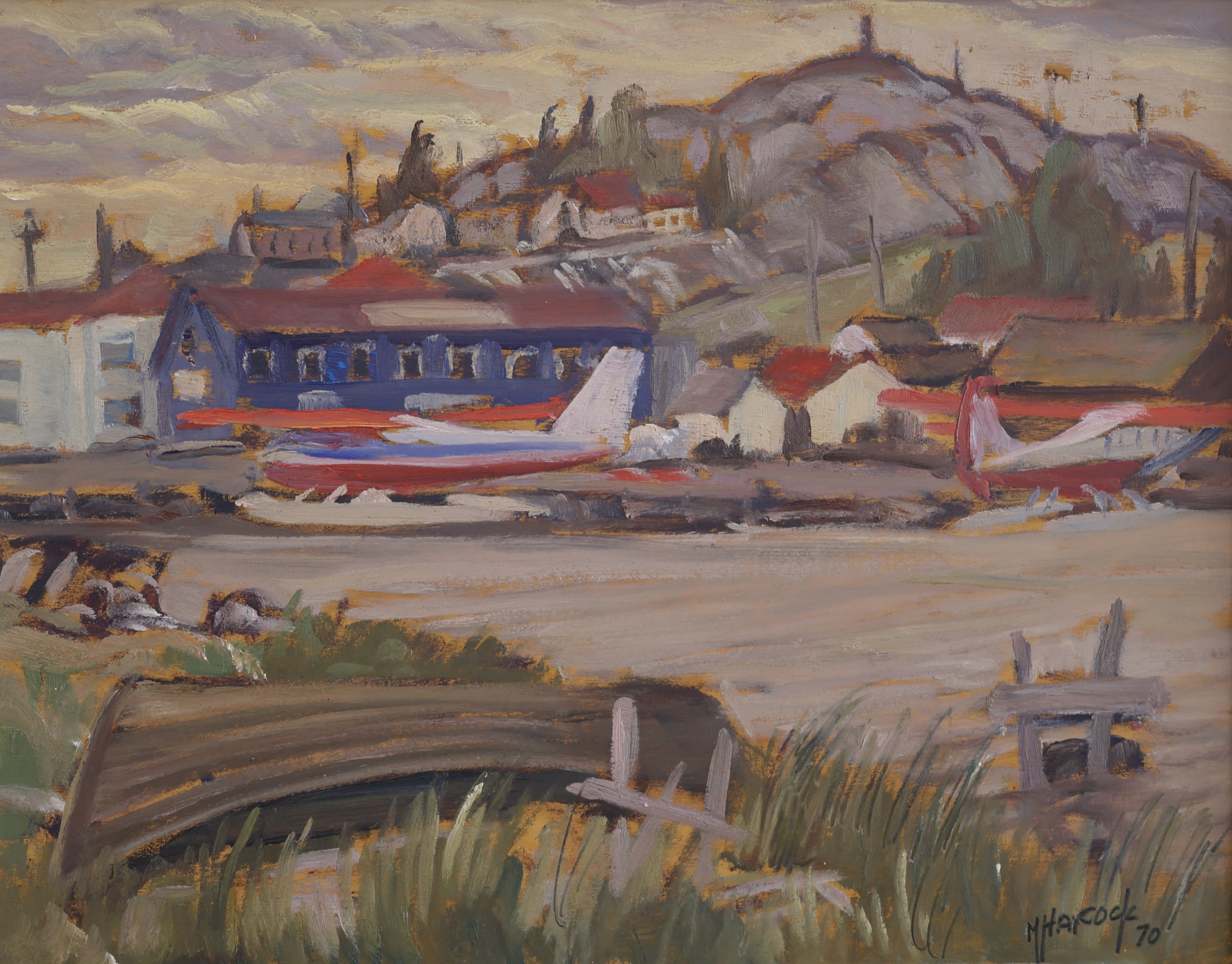 Maurice Haycock; Glimpse of Lower Town, Yellowknife, 1970
Maurice Haycock; Glimpse of Lower Town, Yellowknife, 1970
Turning Point, A Serendipitous Meeting: A pivotal moment in Haycock's life occurred in 1927 aboard a supply ship in the Canadian Arctic, where he had a chance meeting with A.Y. Jackson, a member of the Group of Seven, and Sir Frederick Banting. This encounter ignited Haycock's passion for painting, setting him on a path intertwined with Canada's artistic heritage.
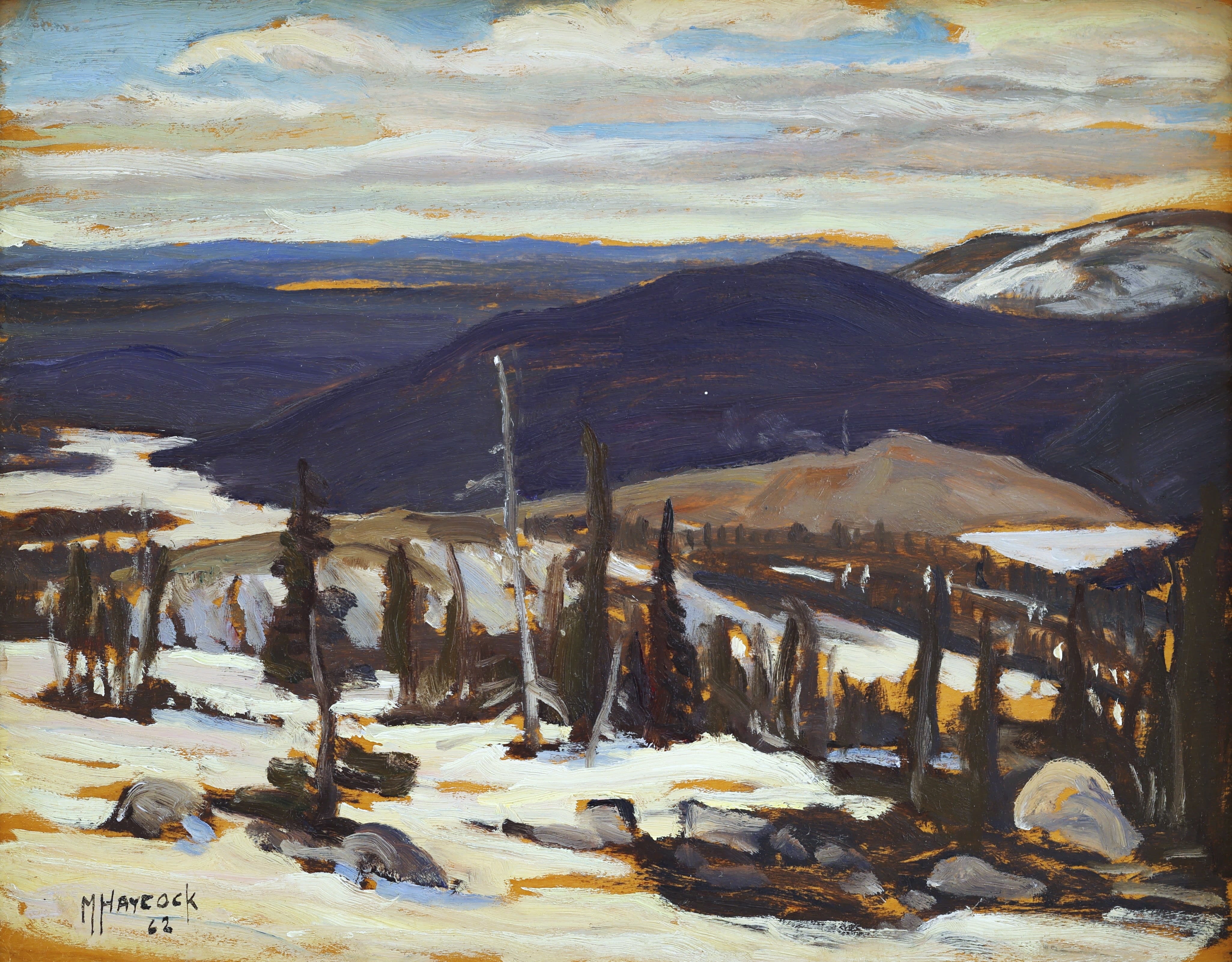 Maurice Haycock; The Smallwood Ore Body
Maurice Haycock; The Smallwood Ore Body
Artistic Partnership with A.Y. Jackson: By the 1940s, Haycock had become a regular painting partner of Jackson, embarking on expeditions across Canada. Their collaborative journeys took them from Charlevoix, Quebec, to the far reaches of Labrador, enriching the Canadian art scene with their collective interpretations of the nation's vastness.

Maurice Haycock; Alexandra Fiord, 1972
A Pioneer in Arctic Art: Haycock's distinction as "Canada's Arctic Artist" was cemented by his relentless pursuit of capturing the Arctic's essence. He painted extensively throughout the North, virtually every year for almost 40 years until his death in 1988. In 1969, he achieved a historic milestone by painting at the North Pole, highlighting his adventurous spirit and dedication to his craft.
Influences of the Arctic: His year-long stay in Pangnirtung Fiord, Baffin Island, in 1926-27 profoundly influenced his artistic direction. Haycock's paintings vividly narrate the Arctic's geological landscapes, Inuit life, and the impacts of exploration and settlement, offering a unique window into the region's soul.
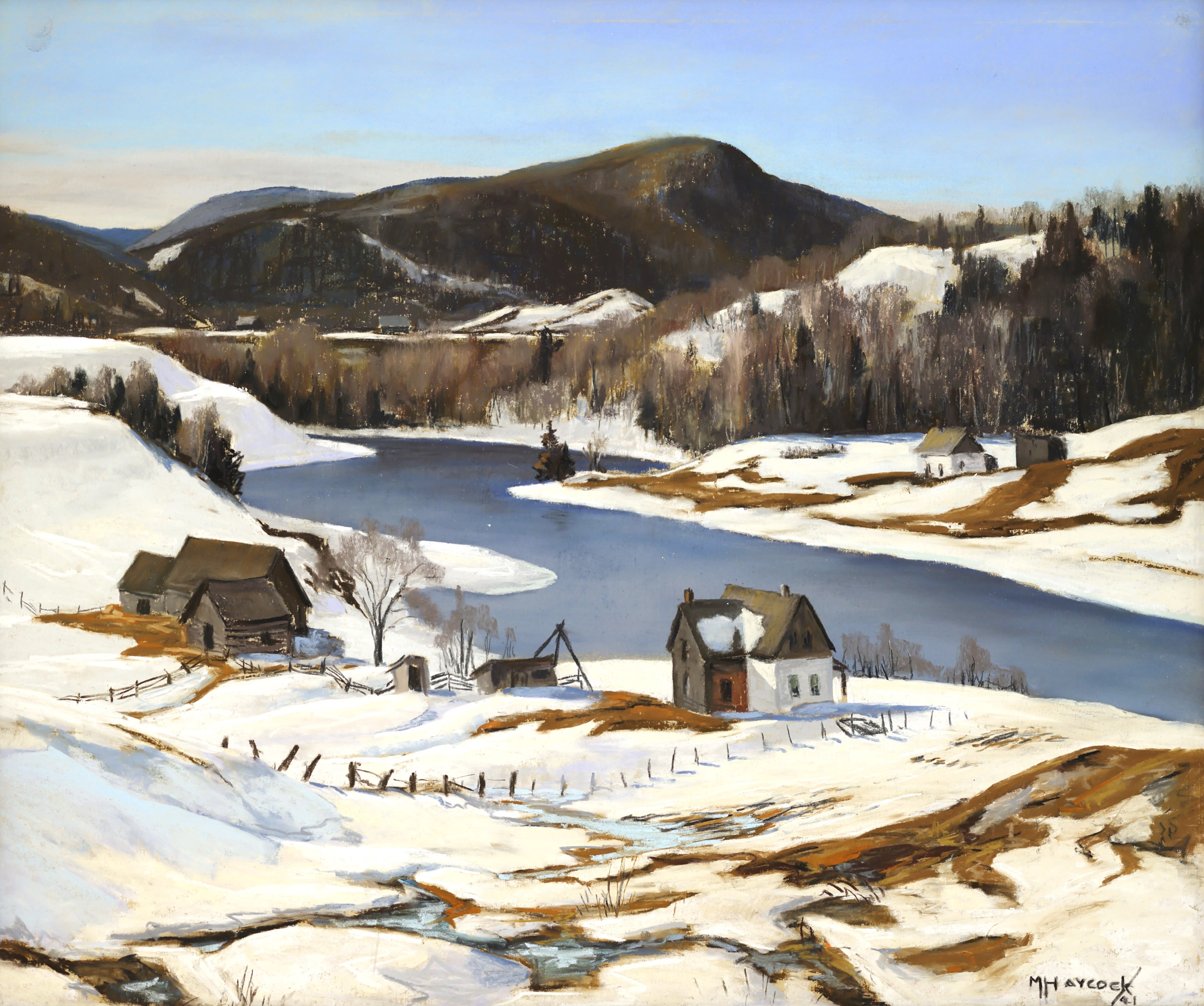
Legacy and Remembrance: Despite a tragic fire in 2003 that claimed many of his original works, Haycock's legacy was immortalized with the posthumous publication of "On-Site with Maurice Haycock, Artist of the Arctic" in 2007, a testament to his significant contributions to Canadian art.
Conclusion: Maurice Haycock's artistic legacy is a testament to his profound connection with the Canadian Arctic, a region he not only explored but also celebrated through his vibrant and faithful portrayals. His journey from science to art exemplifies a life lived in passionate pursuit of beauty and understanding, leaving a lasting impact on Canada's artistic heritage. Haycock's work continues to inspire and resonate, capturing the spirit of exploration and the essence of Canada's northern landscapes.
